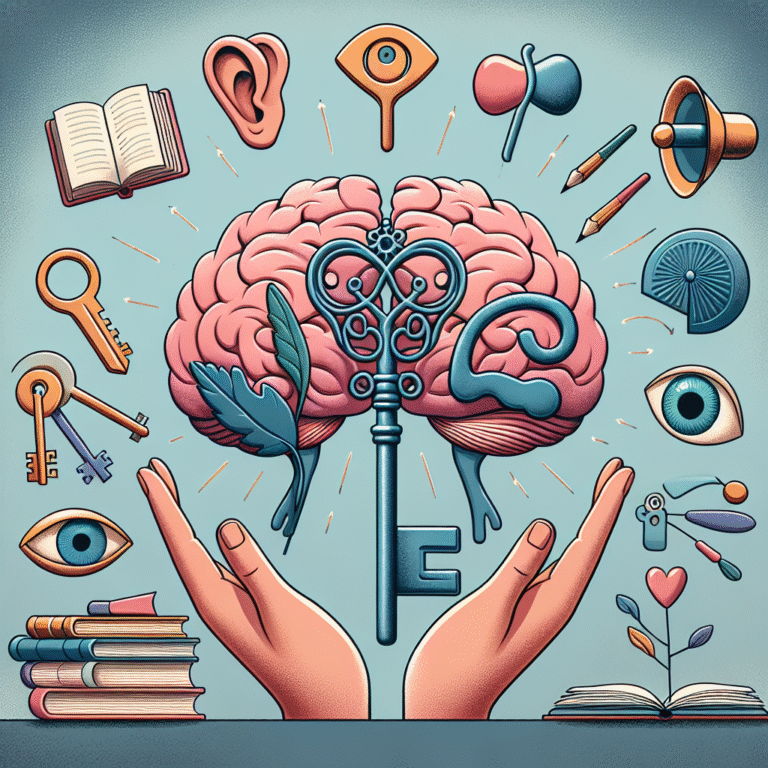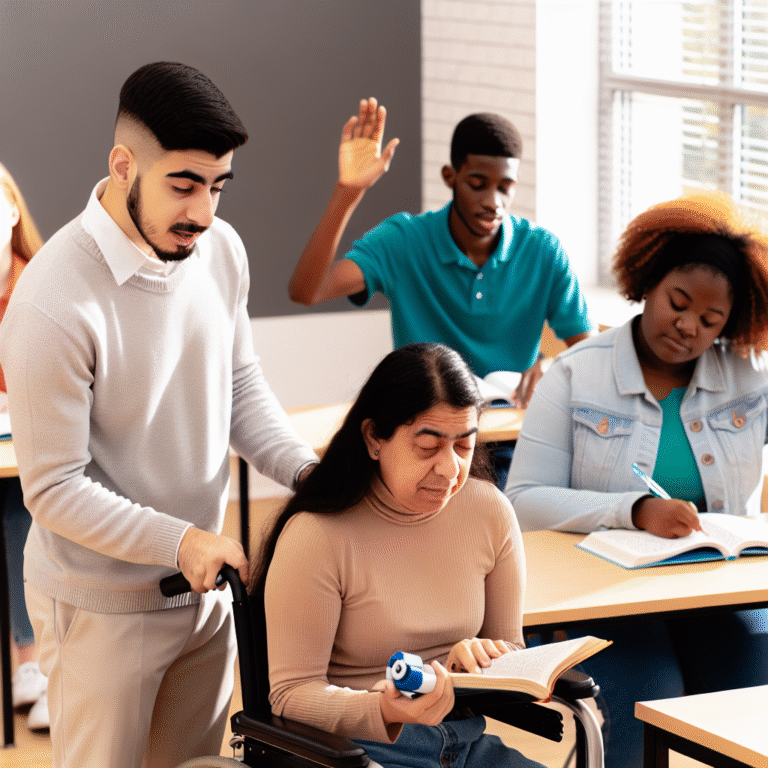
Every Learner Matters: Proven Best Practices for Supporting All Students in the Classroom
Introduction
In today’s rapidly evolving educational landscape, the mantra "Every Learner Matters" resonates louder than ever. With educational institutions being diverse melting pots of cultures, backgrounds, and learning styles, understanding how to effectively support every student is not just a good practice—it’s essential. The phrase "Every Learner Matters: Best Practices for Supporting All Students in the Classroom" serves as our guiding principle in this exploration. This article aims to provide educators with valuable insights, actionable strategies, and inspiring case studies that highlight innovative approaches to inclusivity and support within the classroom.
Understanding Diversity in Learning
The Importance of Inclusivity
Every learner walks into the classroom with a unique blend of abilities, challenges, and perspectives. For educators, recognizing this diversity is the first step toward creating an environment where every learner feels valued and empowered. It’s crucial to foster a community that celebrates differences and offers each student the tools necessary to thrive.
Key Statistics
- Diversity in Classrooms: Approximately 50% of students in public schools come from diverse backgrounds, whether racial, ethnic, or socioeconomic.
- Learning Styles: Research shows that students exhibit varying learning styles, including visual, auditory, kinesthetic, and reading/writing preferences.
This variation among students calls for teaching strategies that accommodate multiple learning styles and preferences, ensuring that every learner receives the support they need to succeed.
Best Practices for Supporting All Students
1. Embrace Differentiated Instruction
Differentiated instruction is a pedagogical approach that encourages teachers to tailor lessons to meet the diverse needs of students. This method values each learner’s unique capabilities, ensuring that every student has access to the curriculum in a way that resonates with them.
Real-World Application
Case Study: Ms. Johnson’s Middle School Classroom
Ms. Johnson, a seasoned middle school teacher, implements differentiated instruction by assigning varied tasks based on her students’ readiness levels. For instance, while teaching a unit on fractions, she provides her advanced students with complex word problems, while others work on visual fraction bars. As a result, students feel challenged yet capable, leading to a more engaging learning environment.
2. Incorporate Universal Design for Learning (UDL)
Universal Design for Learning is a framework that optimizes teaching to effectively instruct all individuals by providing multiple means of engagement, representation, and action/expression. UDL aligns seamlessly with our focus on "Every Learner Matters: Best Practices for Supporting All Students in the Classroom."
Implementation Strategies
- Access Points: Make content accessible through various formats, including videos, infographics, and audiobooks.
- Flexible Assessments: Allow students to demonstrate their understanding through different modalities, such as presentations or creative assignments.
3. Foster a Growth Mindset
Encouraging a growth mindset can significantly influence students’ attitudes towards learning. When learners adopt the belief that their abilities can develop through dedication and hard work, they are more likely to embrace challenges and persist in the face of setbacks.
Motivational Techniques
- Positive Reinforcement: Celebrate efforts, not just outcomes, offering praise for perseverance and risk-taking.
- Reflection Opportunities: Facilitate opportunities for students to reflect on their learning journeys, fostering self-awareness and a love for lifelong learning.
4. Build Strong Relationships
Establishing rapport with students is crucial in creating a positive classroom environment. When students feel connected to their teachers and peers, they are more likely to engage fully in learning.
Engagement Tactics
- Personal Check-Ins: Take time to understand students’ interests and hobbies, integrating these elements into lessons whenever possible.
- Classroom Communities: Create collaborative learning groups, so students can support one another and build meaningful relationships.
Data-Driven Decision Making
Analytics in Education
Utilizing data effectively can enhance the teaching and learning process, helping educators identify areas where each student may need additional support. This aligns perfectly with the "Every Learner Matters" ethos by ensuring that no learner slips through the cracks.
Tools and Techniques
- Assessment Tools: Regular formative assessments provide insight into student progress and identify trends in learning.
- Progress Monitoring: Track data on individual and group performance to inform instructional decisions.
Data Visualization
Utilizing data visualization tools can make it easier to interpret student performance data and adjust teaching strategies accordingly.
| Assessment Type | Frequency | Purpose |
|---|---|---|
| Formative | Weekly | Monitor ongoing understanding |
| Summative | End of Unit | Evaluate overall mastery |
| Diagnostic | Pre Unit | Identify starting points |
Cultivating an Inclusive Environment
The Role of Classroom Management
Classroom management strategies that emphasize respect, responsibility, and empathy are vital in creating an inclusive atmosphere. When students feel safe and valued, they are more likely to participate and engage fully in the learning experience.
Techniques for Success
- Clear Expectations: Set clear, consistent guidelines for behavior that emphasize mutual respect among students.
- Conflict Resolution: Teach students conflict resolution skills to help them navigate interpersonal challenges constructively.
Leveraging Technology
EdTech Tools for All Learners
Integrating technology into the classroom can be transformative, offering diverse learning tools that cater to all learners.
Recommended Technologies
- Interactive Learning Platforms: Tools like Kahoot and Nearpod engage students actively, perfect for varied learning paces.
- Assistive Technologies: Tools such as text-to-speech software and visual organizers can empower students with disabilities to access the curriculum effectively.
Involving Families and Communities
The Importance of Collaboration
Collaboration with families and community members enriches the educational experience. Engaging families creates a support system that reinforces learning beyond the classroom walls.
Strategies for Family Engagement
- Regular Communication: Keep families informed about classroom activities and student progress through newsletters or apps.
- Workshops and Resources: Provide families with workshops that equip them with tools to support their children’s learning at home.
Success Story
Case Study: The Johnson Family Network
At Maplewood High, the administration initiated a Family Network, gathering parents for monthly workshops on effective learning strategies at home. As a result, students reported higher levels of engagement and understanding, demonstrating that community involvement can enhance educational outcomes.
Encouraging Student Voice and Choice
Empowering Learners
Giving students a voice in their education fosters engagement and ownership of their learning. When learners are offered choices in how they learn and demonstrate their understanding, it fosters greater motivation.
Implementation Ideas
- Choice Boards: Allow students to select from various activities to demonstrate their learning in a way that resonates with them.
- Feedback Opportunities: Regularly solicit feedback from students about their learning experiences to refine and adjust instructional practices.
Continuous Professional Development
The Journey of an Educator
As much as we aim to support every learner, teachers must also continue to grow professionally. Engaging in ongoing professional development enhances teachers’ instructional strategies and creates a ripple effect that benefits all students.
Recommended Development Areas
- Cultural Competency Training: Helps educators understand and respect the diverse backgrounds of their students.
- Collaborative Learning Communities: Joining or forming PLCs (Professional Learning Communities) allows for shared knowledge, resource sharing, and mutual support.
Conclusion
The phrase "Every Learner Matters" should be more than just a statement; it should form the backbone of the educational philosophy in every classroom. By embracing best practices for supporting all students, educators can ensure that every learner, regardless of background or ability, has access to a quality education that allows them to thrive.
As we reflect on the insights shared within this article, let us remember that creating an inclusive and supportive classroom is a collaborative journey. The strategies discussed here are designed to empower educators and enrich the learning experiences of all students.
Actionable Takeaway
Start today! Choose one or two of the best practices highlighted in this article to implement in your own classroom. Monitor the changes and witness the impact on your learners.
FAQs
1. What does "Every Learner Matters" mean?
"Every Learner Matters" emphasizes that all students should be recognized and supported in their unique learning needs, ensuring an equitable educational experience.
2. How can I implement differentiated instruction effectively?
Begin by assessing your students’ learning styles and readiness levels. Then, design lessons that offer varied tasks and assessments tailored to different learning preferences.
3. What is Universal Design for Learning (UDL)?
UDL is a framework that guides the design of learning experiences to ensure they work for all individuals by providing multiple means for engagement, representation, and action/expression.
4. How can I encourage a growth mindset in my students?
Promote a culture of perseverance by praising efforts, allowing room for mistakes, and providing opportunities for self-reflection.
5. How can technology enhance learning for diverse learners?
EdTech tools can help deliver content in various formats, allowing students to engage with material in ways that best suit their individual learning styles.
6. How do I involve families in the education process?
Regular communication, opportunities for parent workshops, and creating collaborative learning environments are effective ways to engage families in the educational experience.
By following these best practices and fostering an inclusive environment, we can collectively contribute to a future where every learner truly matters in the classroom.






